February 5th, 2013 §
One upside of attending to my Lavender Orpington’s wound on Sunday was that I discovered she had lice. And when I snagged Oregano, my barred olive egger, for inspection I saw that she too had a few creepy crawlies. It was time for an intervention.
With a healthy flock, regular dust bathing will keep most parasites at bay. But in winter, with its frozen or muddy ground, the birds aren’t able to dust bathe as much as in the warmer seasons. This gives lice a chance to populate the birds. If unchecked, these blood-sucking parasites will deplete a bird to the point where it dies.
Thankfully my flock was no where near that stage. Yet, after spending a night researching various treatments I decided to go straight for the chemical intervention and not waste my time with more “natural” or “organic” methods. I really wanted to nip this infestation in the bud, particularly as it’s still winter and the birds need all the energy they produce just to keep warm and regrow the feathers they’ve lost. And, in another few weeks (if I can get Iris to go broody again) I’d like to try hatching some eggs, which means all my birds should be as healthy as possible and louse-free to avoid passing the bugs on to more-vulnerable chicks.
So I picked up a can of poultry dust, which is a permethrin-based formulation that you may have used for insects in your vegetable garden. I assembled my tools:
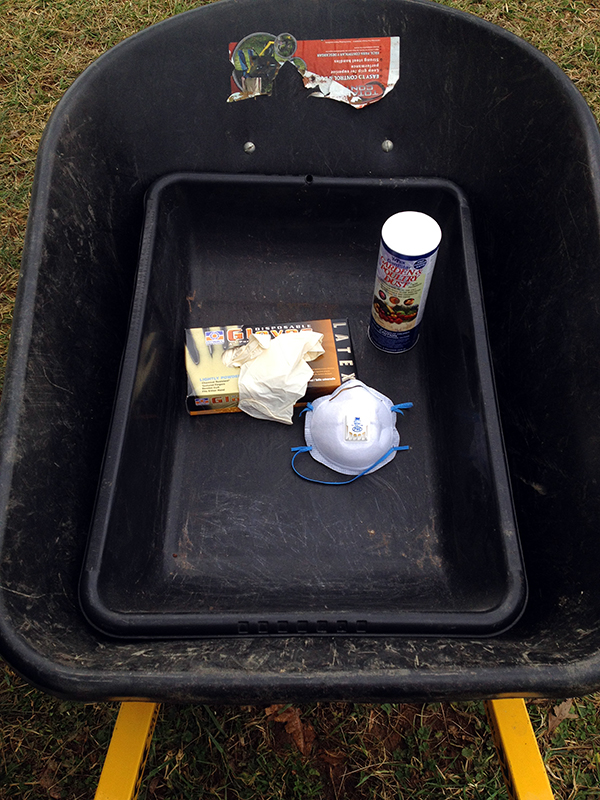
I also suited up in latex gloves and a dust mask. Well, the gloves were a joke because it took just one kick of a captured chicken to shred them. I went through five pairs through this process and still ended up covered in dust. If you’re concerned about skin contact, I’d suggest heavier gloves for this job. And, really, with all the flapping and wind I ended up covered with this dust so if you are truly concerned it may not be the treatment for you to use.
Cora, the Wheaten Ameraucana hen, was the first I caught in the coop. Following the advice of a YouTube video, I flipped her on her back. This seemed to calm her enough that I could powder under her wings, a favorite parasite hiding spot. I held her upside down to work the powder in to the feathers under her vent, which is where I saw the lice in all my birds.
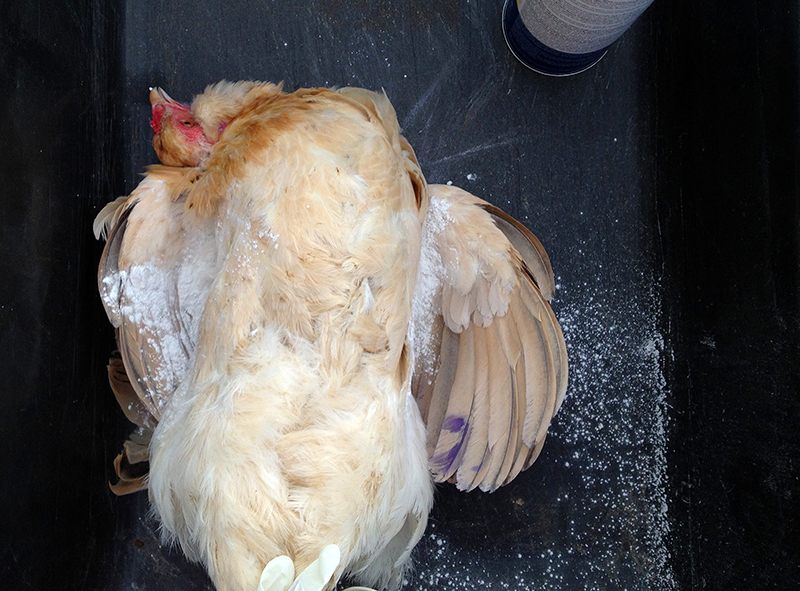
Lilac was up next.
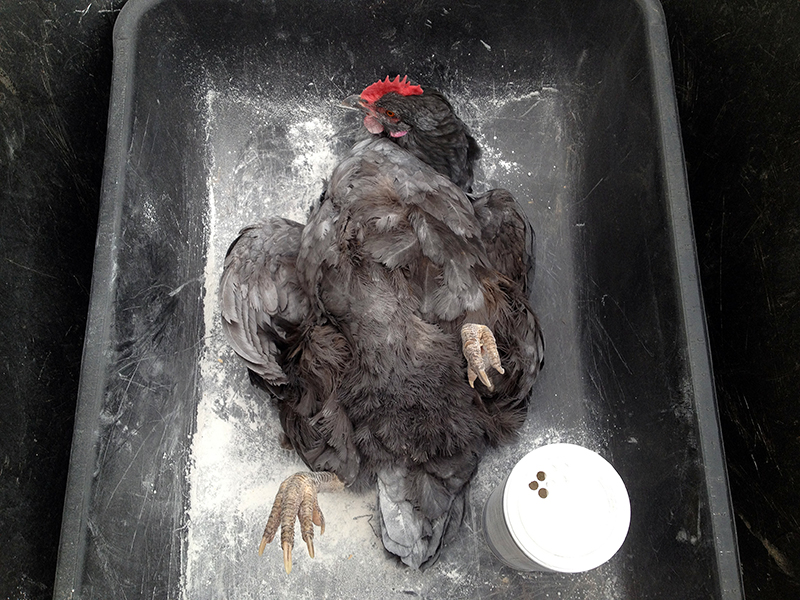
And so on through the flock. I left the injured Lavender until last so I could inspect her wound. It was open and bleeding, which I prefer to closed and infected, and seemed a tiny bit smaller than on Sunday.
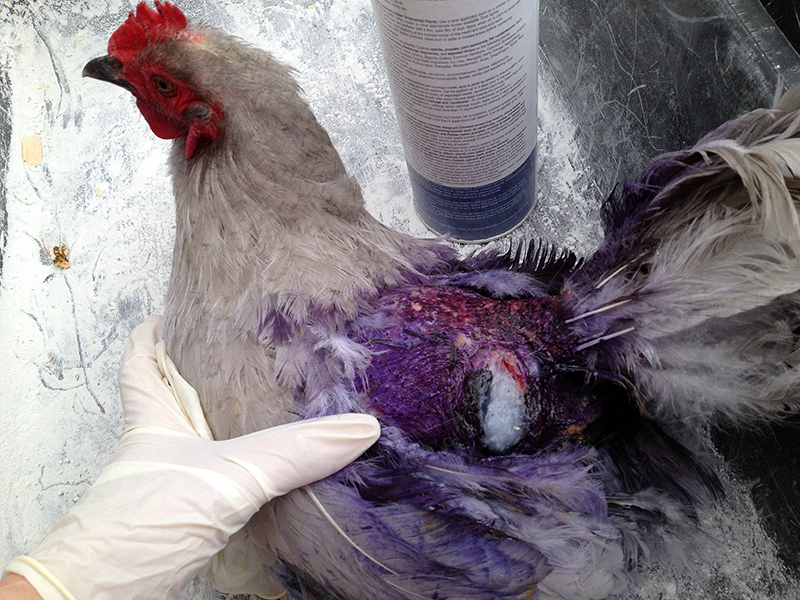
I packed it full of neosporin before dusting her.
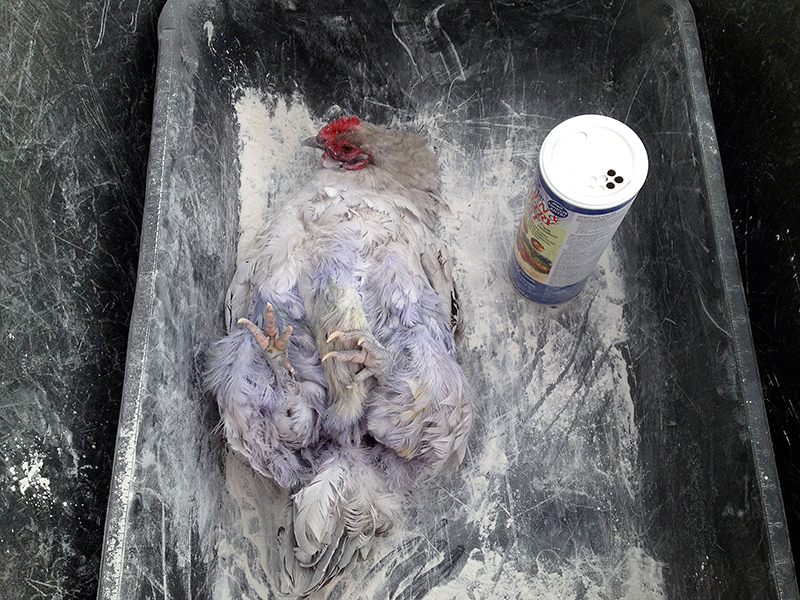
Now that’s a Lavender Orpington!
With the flock dusted, I did some housekeeping in the coop. I sprinkled food-grade diatomaceous earth in the nest boxes, in the chicken food, and filled a litter box with the stuff for dust-bathing in the coop. The diatomaceous earth, which is actually decomposed hard-shelled algae, acts in a mechanical manner (as opposed to chemical) on insects by slicing open their soft bodies, killing them.
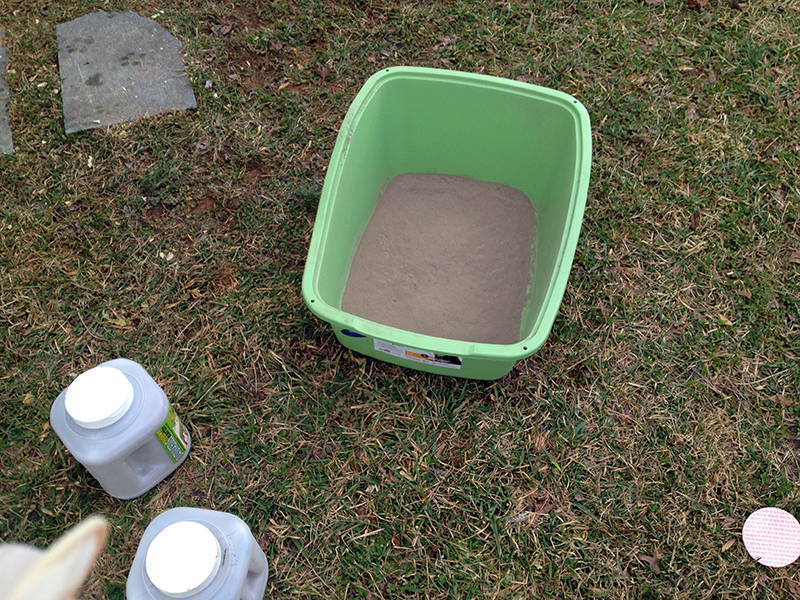
And with that the delousing procedure was complete. Now I get to look forward to ten days from now, when I repeat the powdering to kill any nits that will have hatched since today. Fun times!
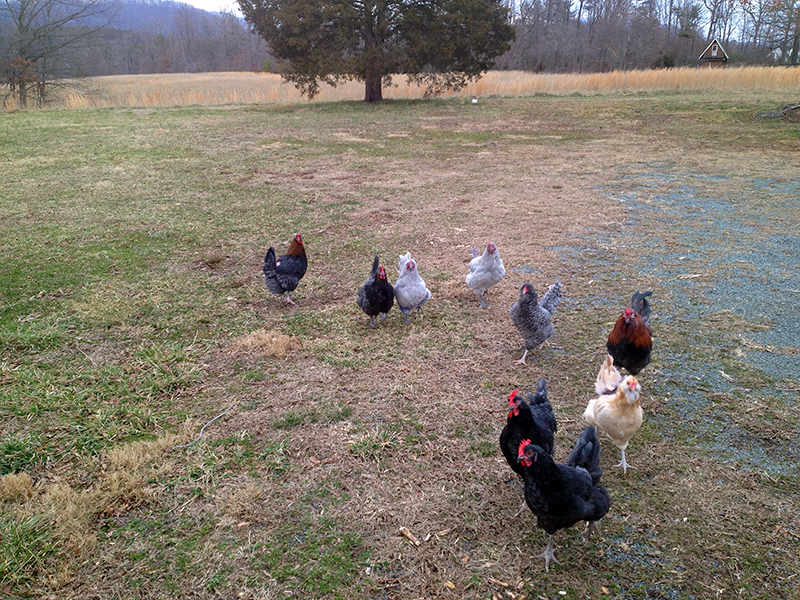
November 26th, 2012 §
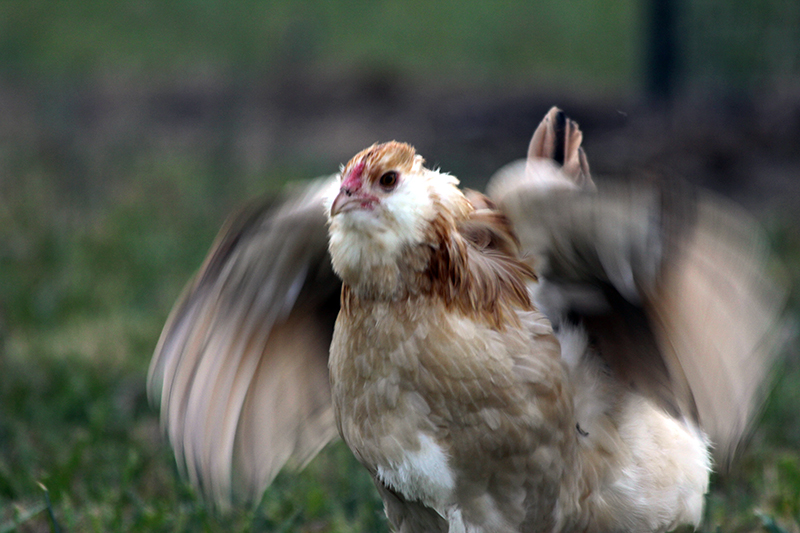
On November 8, Cora laid her first perfect blue egg. This was a discovery of pure joy as Cora—my only Wheaten Ameraucana pullet— survived a vicious attack in her young life and walked so close to death for several months as her scalped head healed.
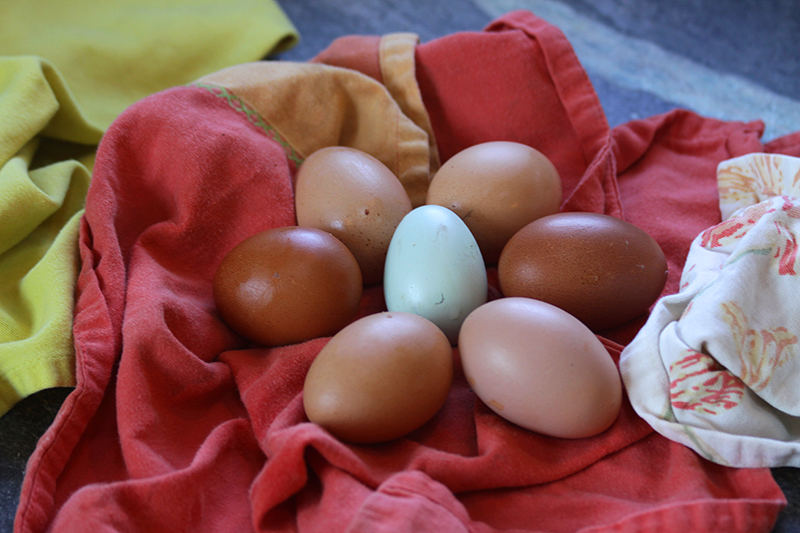
The Black Copper Marans have also started laying (darkest brown eggs above), as well as the Lavender Orpingtons (light-toned eggs above). Lilac and Iris still seem to be keeping up in their second year of laying. The light on a timer set to turn on at 5:00 a.m. seems to be doing the trick to foil the low-daylight hour laying slowdown. My record has been seven eggs in one day, which of a flock of eight hens is a pretty good return. I am not sure that my “barred olive egger” Oregano has laid yet—if she has, she’s not an olive egger!
One of the best parts of my day is picking up the eggs. It’s this pleasure that exists to offset the pain of discovering and nursing bleeding mostly dead birds, managing flock integration, mucking out the coop, and all the other rough aspects of being mother hen.
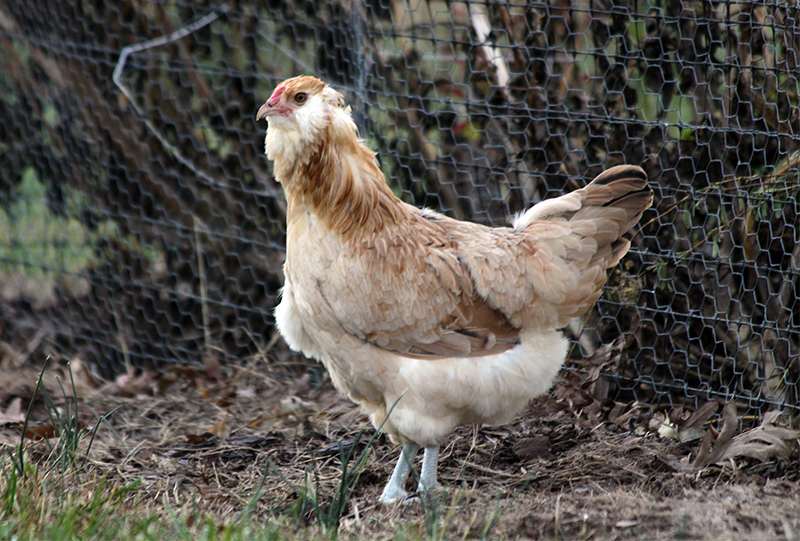
Recovered, and now productive, Cora, with only a slightly mussed feather pattern about her beautiful head to belie her hard young life.
September 29th, 2012 §
I got up this morning and, all inspired by the things I learned from Patricia Foreman at the Mother Earth News Fair, decided to turn my chickens loose in my garden. There’s not too much in it now other than flowers and some last-ditch attempts at peas, beans and greens, and I figured that if the chickens took a shining to any of those it’d be no big loss. What I’m really after is pest control.
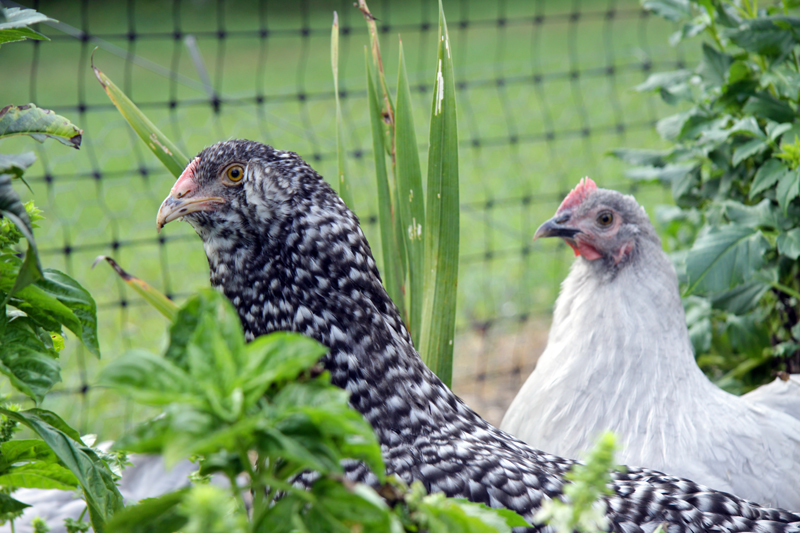
I caught each bird in the coop and plopped them in the garden, which when closed up in a fairly predator-proof arrangement. I wasn’t too worried about hawks as the dahlias and zinnias were tall and thick enough to provide good cover. Plus, I have a farm dog who took it upon himself to add “vigilantly defends against threats from the sky” to his long list of qualifications.
I checked on the birds throughout the day while I did one of my least-favorite farm chores, mulching around my trees. I wanted to make sure Lilac, who until now had been confined in a dog crate in the coop because she showed murderous tendencies toward Cora, was playing nicely. Everyone was fine all day.

Around five tonight I realized I’d better figure out how to get the birds back in their coop. Now, seven of my nine birds had never ventured further than their little redneck chicken run, and I couldn’t expect to just open the garden door and have them know how to find home. And chasing—and most likely losing—birds that had no ability to figure out how to get to bed before dark induced cringe-worth flashbacks to all the drama suffered with my guineas. I needed another plan.
So I did what any scrappy homesteader would do and looked around for something to repurpose for my needs. I found what I was looking for in a roll of netting that’s usually used to protect bushes from browsing deer. It’s much finer, and therefore easier to handle, than the heavy-duty plastic deer fencing I used around the garden and to make the chicken run. Plus, in addition to an almost new roll, I even had some already used netting balled up in a corner of the garage. I’d stuffed it there after I’d found it in the wellhouse, where it served as a death trap to what was by now a well-dessicated black snake. It’s been long enough that my memory of cutting that rotten snake out of the netting has faded, so I grabbed that piece as well.
A few clothespins later and I’d fashioned a corridor from the garden door into the chicken run. I opened the netting that serves as my garden door and within a second Cora and Calabrese strutted home.
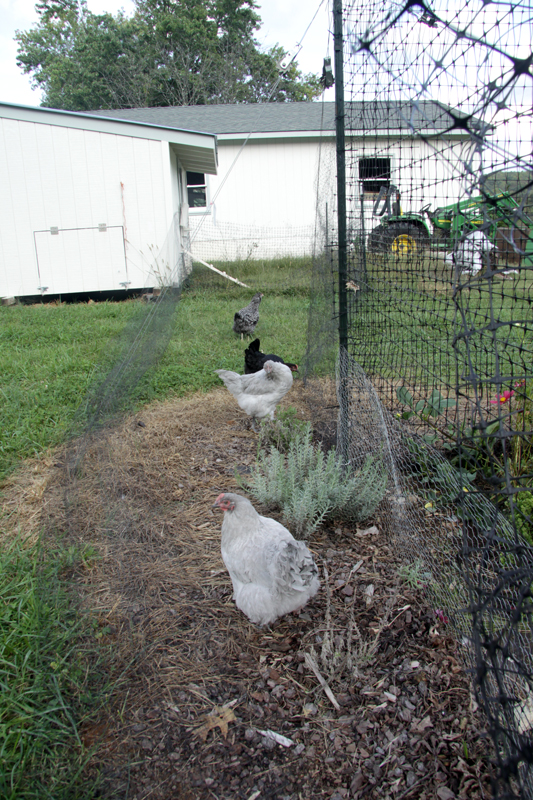
The rest of the birds took a bit of convincing, with Iris and Lilac, who are used to freeranging (and begging for scratch feed) bringing up the rear.
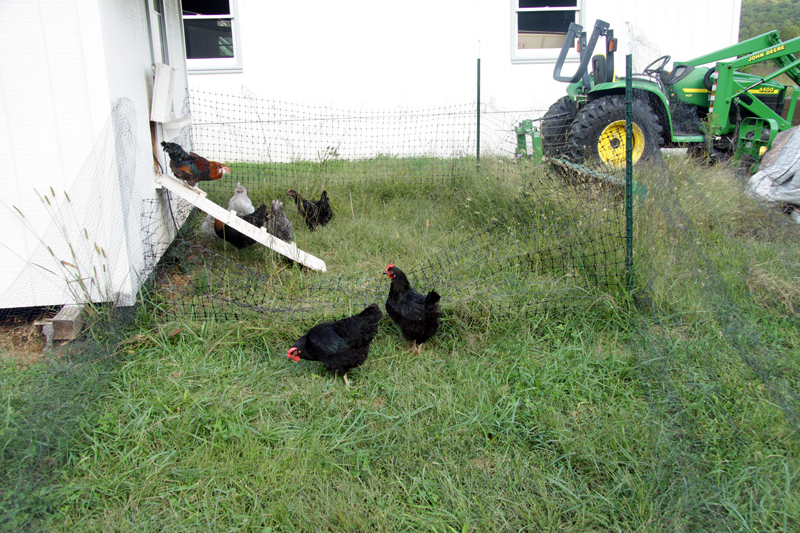
But they too joined the flock in the run, and from there they jumped back in their house to gorge on chicken feed like they hadn’t just spent eight hours enjoying all the wild delicacies of a late-summer garden.
I’ve left left Lilac loose with the flock instead of returning her to her punitive crate. I hope that she decides to be a get-along gal, or she may need to find herself another home. It will be another nerve-wracking morning when I open the coop tomorrow, unsure of what I may find. Let’s hope it’s nine nonbleeding chickens.
In other chicken news, I put a timer on the coop light this morning to artificially extend the hens’ day, thus inducing them to continue to lay through the winter. When the length of daylight slips below about fourteen hours, most hens will stop laying. Last year I didn’t use a light, and Lilac and Iris took a break from laying during the darkest part of the year.
The jury is out on whether it’s “good” or “bad” to have hens lay throughout the winter, with some camps claiming that the hens need the winter to rest even though the original chickens lived near the equator, where daylight hours don’t expand and contract with the seasons they way they do in Virginia. Several variables factored in to my decision, the first being that last winter when my hens weren’t laying I was buying eggs from Joel Salatin’s operation, Polyface Farm. If he was doing something to keep his hens laying in winter, why wasn’t I? Somebody’s hen, somewhere, will have to work through the winter so it might as well be mine. Second, the cost of feed has risen to more than $15 per 50 lb. bag. With each hen eating about a quarter pound of feed a day (thus my experiment to have the chickens forage for a larger percent of their diet), it doesn’t make economic sense to not be getting something out of the bird. As much as I love my chickens, they are not freeloading pets. And even my house pets, a dog and a cat, work for their food in myriad ways. Finally, I got a late start with chicks this year and have six hens—two lavender orpingtons, two black copper marans, a barred olive egger, and a wheaten ameraucana, who have yet to begin laying. I don’t really want to wait until next spring to see the rainbow of eggs they’re expected to produce, so I hope that extra light in the winter will get them in to production before next spring. That light’s coming on in the coop starting at 5:00 a.m. tomorrow, so we’ll see what happens!














